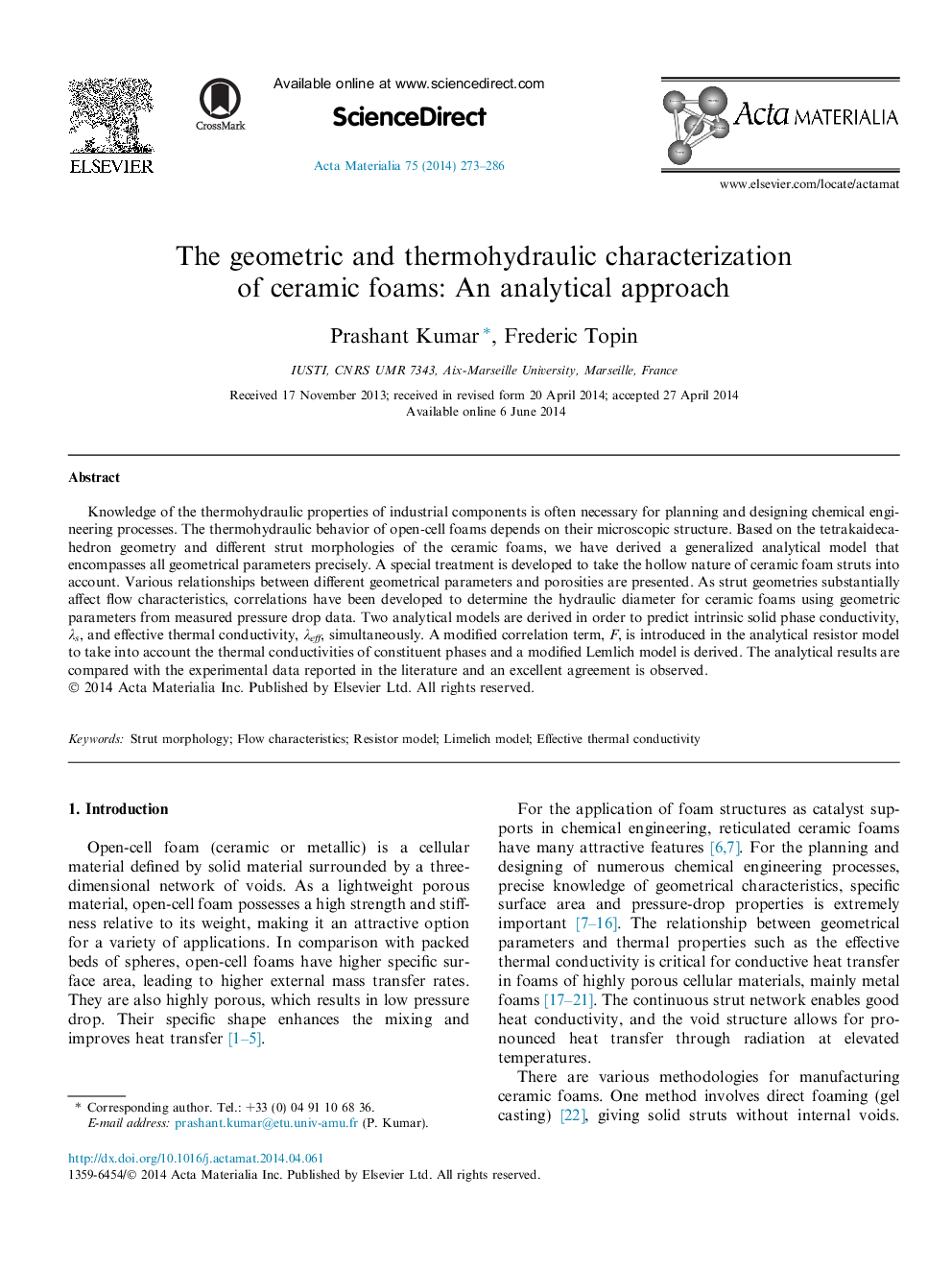| Article ID | Journal | Published Year | Pages | File Type |
|---|---|---|---|---|
| 1445484 | Acta Materialia | 2014 | 14 Pages |
Knowledge of the thermohydraulic properties of industrial components is often necessary for planning and designing chemical engineering processes. The thermohydraulic behavior of open-cell foams depends on their microscopic structure. Based on the tetrakaidecahedron geometry and different strut morphologies of the ceramic foams, we have derived a generalized analytical model that encompasses all geometrical parameters precisely. A special treatment is developed to take the hollow nature of ceramic foam struts into account. Various relationships between different geometrical parameters and porosities are presented. As strut geometries substantially affect flow characteristics, correlations have been developed to determine the hydraulic diameter for ceramic foams using geometric parameters from measured pressure drop data. Two analytical models are derived in order to predict intrinsic solid phase conductivity, λs, and effective thermal conductivity, λeff, simultaneously. A modified correlation term, F, is introduced in the analytical resistor model to take into account the thermal conductivities of constituent phases and a modified Lemlich model is derived. The analytical results are compared with the experimental data reported in the literature and an excellent agreement is observed.
